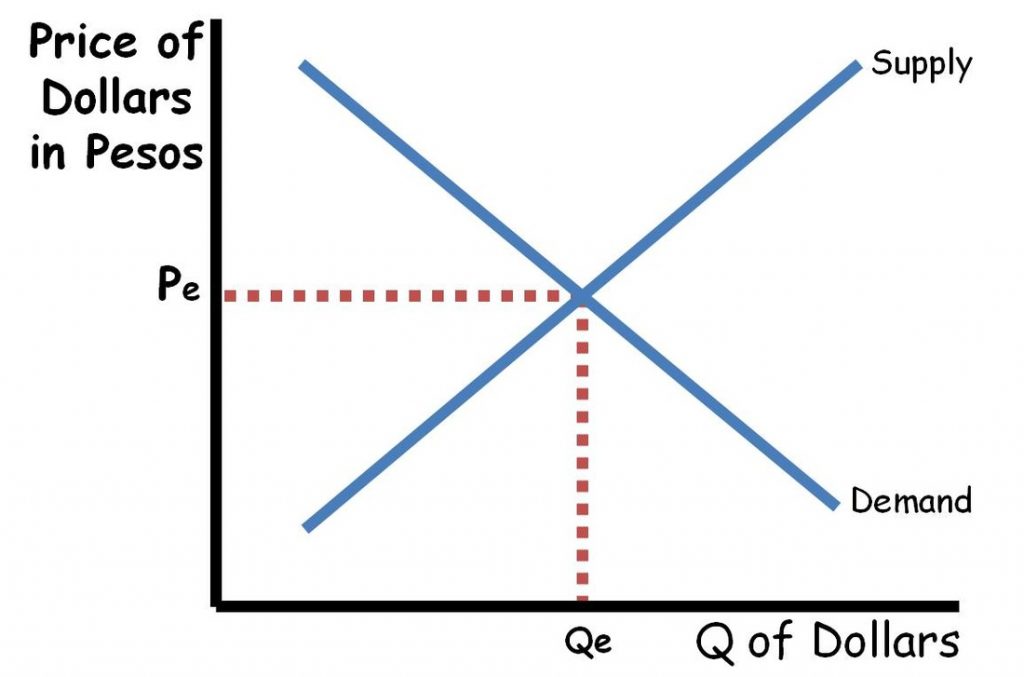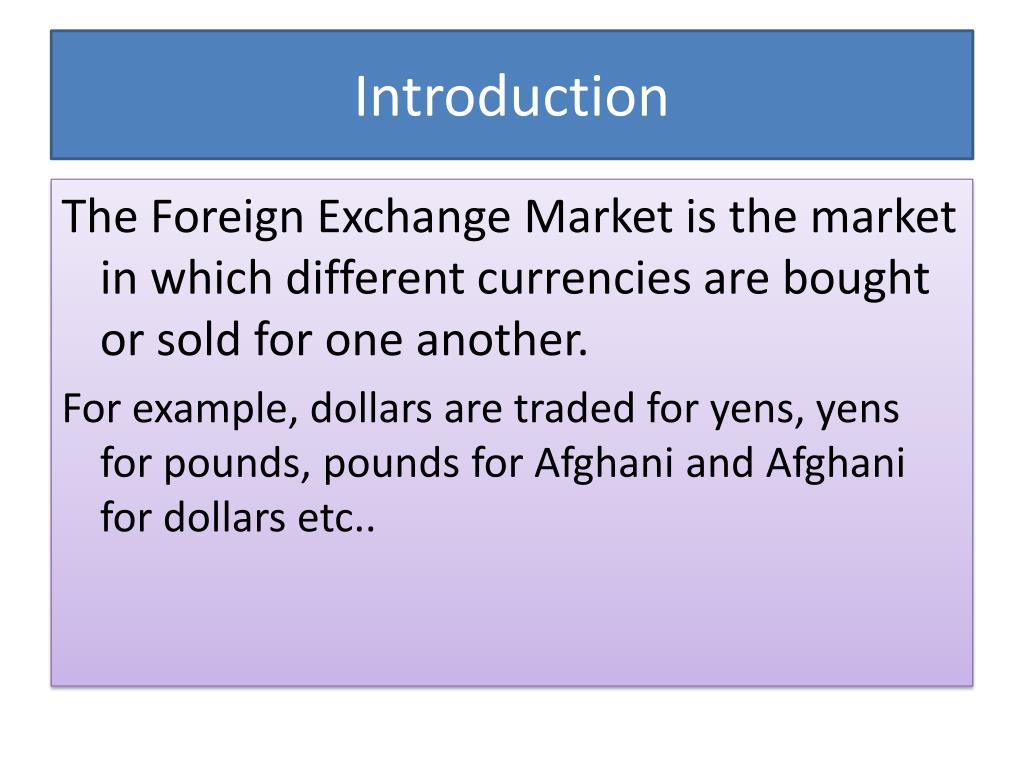Welcome to the fascinating realm of foreign exchange, where currencies dance and economies intertwine. As we delve into the basic concepts of foreign exchange market, we’ll uncover its significance in international trade, its historical evolution, and the key players shaping its dynamics.
Prepare to embark on a journey through the world of currency exchange, where understanding the fundamentals will empower you to navigate its complexities and harness its potential.
Basic Concepts of Foreign Exchange Market
The foreign exchange market (forex market) is a global, decentralized marketplace where currencies are traded. It is the largest financial market in the world, with an average daily trading volume of over $5 trillion. The forex market is essential for international trade and finance, as it allows businesses and individuals to exchange currencies in order to conduct transactions across borders.
Historical Overview of the Foreign Exchange Market
The forex market has its origins in the early days of international trade. Merchants would exchange currencies in order to facilitate transactions with each other. Over time, the forex market evolved into a more organized system, with the establishment of banks and other financial institutions that specialized in currency trading. The development of the internet in the late 20th century further revolutionized the forex market, making it possible for individuals and businesses to trade currencies online.
Market Structure and Trading

The foreign exchange market, often referred to as Forex or FX, is a decentralized global market where currencies are traded. It’s the largest financial market in the world, with a daily trading volume exceeding $5 trillion. The market operates 24 hours a day, 5 days a week, facilitating the exchange of currencies between individuals, businesses, banks, and governments.
In this topic, you find that foreign exchange market importance is very useful.
The foreign exchange market consists of three main types of markets:
- Spot Market: In the spot market, currencies are traded for immediate delivery, typically within two business days. This market is primarily used for short-term currency transactions.
- Forward Market: In the forward market, currencies are traded for delivery at a future date, which can range from one month to several years. This market allows participants to hedge against future currency fluctuations.
- Futures Market: The futures market is similar to the forward market, but it involves standardized contracts that are traded on exchanges. Futures contracts have a set expiration date and a specified amount of currency to be delivered.
Mechanisms of Foreign Exchange Trading
Foreign exchange trading involves various order types, including market orders, limit orders, and stop orders. Market orders are executed immediately at the best available price, while limit orders are executed only when the specified price is reached or surpassed. Stop orders are used to trigger a trade when the currency reaches a certain level.
Once an order is placed, it is matched with an opposite order in the market. The execution of the trade is facilitated by brokers or banks, who act as intermediaries between buyers and sellers. The settlement of the trade typically occurs through the clearing and settlement systems of the respective central banks.
Remember to click foreign exchange market strategies to understand more comprehensive aspects of the foreign exchange market strategies topic.
Factors Influencing Foreign Exchange Rates
Foreign exchange rates are influenced by a multitude of factors, including economic data, political events, and central bank policies. Economic data, such as GDP growth, inflation, and unemployment rates, provide insights into the economic health of a country and can impact its currency’s value.
Political events, such as elections, referendums, and geopolitical tensions, can also affect currency rates. For example, political uncertainty can lead to a decrease in the value of a currency as investors seek safer havens.
Central bank policies, particularly interest rate decisions, have a significant impact on currency rates. Interest rate differentials between countries can influence the flow of capital and affect the demand for currencies.
Currency Pairs and Exchange Rates

The foreign exchange market is where currencies are traded and exchanged. Different currencies are traded in pairs, and the exchange rate between two currencies indicates how much of one currency is needed to buy one unit of another.
Find out about how foreign exchange market risks can deliver the best answers for your issues.
The most traded currency pairs are known as major currency pairs, and they include the euro (EUR), the US dollar (USD), the Japanese yen (JPY), the British pound (GBP), and the Swiss franc (CHF). These currencies are widely used in international trade and finance, and they have a high level of liquidity, which means that they can be easily bought and sold.
Exchange Rates
Exchange rates are determined by supply and demand. When there is a high demand for a particular currency, its value will increase relative to other currencies. Conversely, when there is a low demand for a currency, its value will decrease.
There are three main types of exchange rate regimes:
- Fixed exchange rates: Under a fixed exchange rate regime, the value of a currency is pegged to another currency or a basket of currencies. This means that the central bank intervenes in the foreign exchange market to buy or sell its own currency to keep the exchange rate within a narrow band.
- Floating exchange rates: Under a floating exchange rate regime, the value of a currency is determined by supply and demand in the foreign exchange market. The central bank does not intervene in the market, and the exchange rate can fluctuate freely.
- Managed floats: Under a managed float regime, the central bank intervenes in the foreign exchange market to smooth out fluctuations in the exchange rate. However, the central bank does not peg the currency to another currency or a basket of currencies, and the exchange rate can still fluctuate.
Risk Management and Regulation
The foreign exchange market is a global, decentralized marketplace where currencies are traded. It is the largest financial market in the world, with a daily trading volume of over $5 trillion. Due to its size and complexity, there are a number of risks involved in foreign exchange trading.
The most common risks are:
- Currency risk: This is the risk that the value of a currency will change, resulting in a loss or gain.
- Interest rate risk: This is the risk that interest rates will change, resulting in a loss or gain.
- Political risk: This is the risk that political events will affect the value of a currency.
There are a number of different risk management techniques that can be used to mitigate these risks. These techniques include:
- Hedging: This is a technique that involves using a financial instrument to offset the risk of another financial instrument.
- Diversification: This is a technique that involves investing in a variety of different currencies to reduce the risk of loss.
- Stop-loss orders: This is a type of order that is used to limit the amount of loss that can be incurred on a trade.
The foreign exchange market is also regulated by a number of international agreements and national laws. These regulations are designed to ensure the orderly functioning of the market and to protect investors from fraud and abuse.
Market Analysis and Forecasting: Basic Concepts Of Foreign Exchange Market
Market analysis and forecasting are crucial aspects of the foreign exchange market, enabling traders to make informed decisions about currency pairs. Two primary approaches are used: technical analysis and fundamental analysis.
Technical Analysis, Basic concepts of foreign exchange market
Technical analysis involves studying historical price data to identify patterns and trends that may indicate future price movements. It utilizes various technical indicators, such as:
- Moving Averages: Smoothing out price fluctuations to reveal underlying trends.
- Support and Resistance Levels: Identifying areas where prices have historically bounced off or reversed.
- Candlestick Patterns: Visual representations of price movements over a period, providing insights into market sentiment.
Fundamental Analysis
Fundamental analysis focuses on macroeconomic factors that can influence exchange rates, such as:
- Economic Data: Gross domestic product (GDP), inflation, unemployment, etc.
- Political Events: Elections, policy changes, international relations.
- Central Bank Policies: Interest rate decisions, quantitative easing.
By combining technical and fundamental analysis, traders can gain a comprehensive understanding of market dynamics and make more informed forecasts about exchange rate movements.
Role of Technology and Innovation

Technology has revolutionized the foreign exchange market, enabling the development of electronic trading platforms, automated trading systems, and other innovative solutions. These advancements have significantly impacted market structure, trading efficiency, and risk management.
Electronic Trading Platforms
- Electronic trading platforms have transformed the foreign exchange market by providing a centralized venue for currency exchange. These platforms facilitate real-time order matching and execution, enabling traders to access liquidity and execute trades quickly and efficiently.
- Examples of prominent electronic trading platforms include EBS, Reuters Dealing 3000, and FXall.
Automated Trading Systems
- Automated trading systems, also known as algorithmic trading or black-box trading, use computer algorithms to execute trades based on predefined criteria. These systems can monitor market conditions, analyze data, and execute trades autonomously, providing traders with the ability to automate their trading strategies.
- Automated trading systems can enhance efficiency, reduce execution time, and provide traders with the ability to trade around the clock.
Emerging Trends in Technology and Innovation
The foreign exchange market continues to evolve with emerging trends in technology and innovation. Some notable areas include:
- Artificial Intelligence (AI): AI algorithms are being used to develop sophisticated trading strategies, analyze market data, and predict currency movements.
- Blockchain Technology: Blockchain technology has the potential to enhance transparency, security, and settlement efficiency in the foreign exchange market.
- Cloud Computing: Cloud computing provides traders with access to powerful computing resources and data analytics tools, enabling them to develop and execute complex trading strategies.
Concluding Remarks
Our exploration of the basic concepts of foreign exchange market has illuminated its pivotal role in global finance. From its historical roots to its modern-day complexities, we’ve gained insights into the mechanisms that drive currency exchange rates and the strategies employed to manage risk.
Remember, knowledge is the key to unlocking the opportunities and mitigating the challenges of the foreign exchange market. Continue your exploration, stay informed about economic developments, and you’ll be well-equipped to make informed decisions in this ever-evolving financial landscape.
